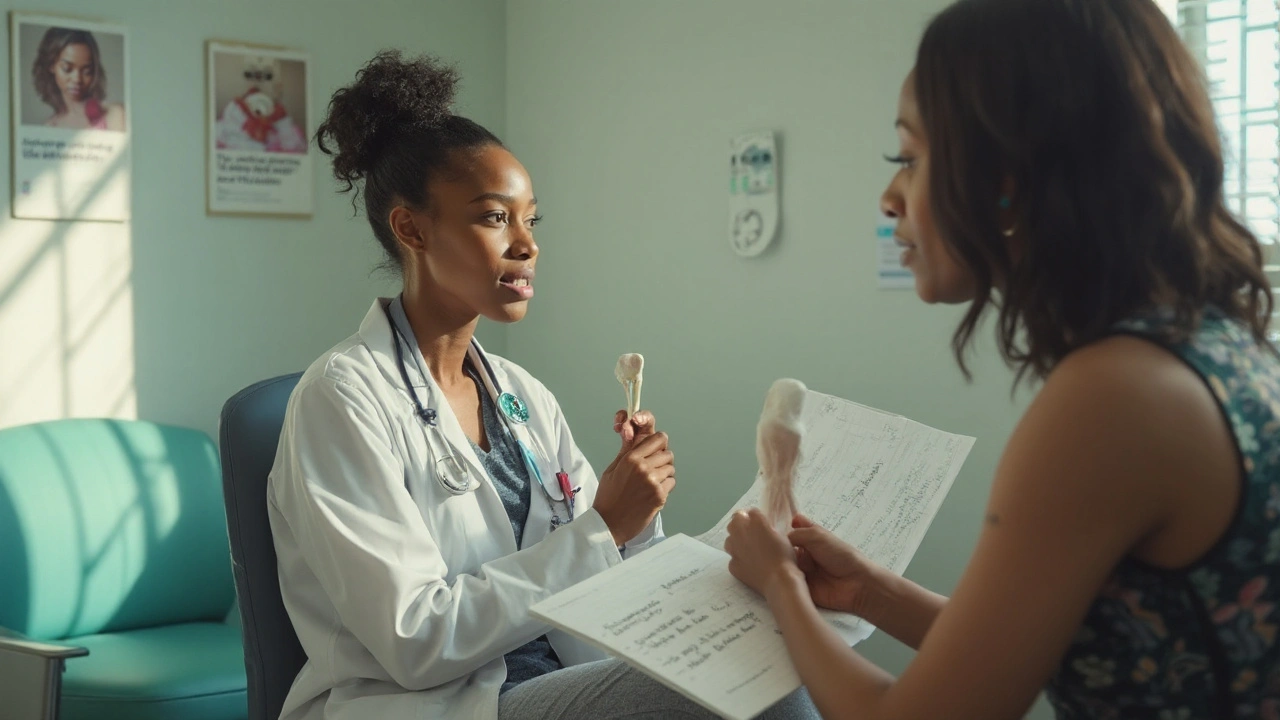
Health August 23, 2025
Chlamydia and Ovarian Cancer Risk: Evidence, Symptoms, and What To Do Now
You clicked because you’ve heard whispers that a past STI might raise your chance of ovarian cancer and you want the truth-without scare tactics. Here it is: the link between chlamydia and ovarian cancer is real enough to study and take seriously, but it’s not a cause-and-effect verdict. Your absolute risk is still small, and there’s a lot you can do right now to protect your health-testing, treatment, symptom awareness, and smart prevention.
TL;DR
- Chronic or repeated chlamydia and pelvic inflammatory disease (PID) are associated with a small increase in ovarian cancer risk, but causation isn’t proven.
- For most women, lifetime ovarian cancer risk in the UK is about 1 in 50; a small relative increase still means a low absolute risk.
- There’s no reliable screening test for ovarian cancer; know symptoms and see your GP if they persist most days for 3+ weeks.
- Test for chlamydia: under 25s annually or when changing partners; over 25s based on risk. NHS testing and treatment are free.
- Prompt treatment, partner treatment, and preventing reinfection matter. Keep a symptom diary and advocate for yourself.
What we actually know about the link
First, the basics. Chlamydia trachomatis is the most common bacterial STI in the UK, especially in people aged 15-24, according to UK Health Security Agency surveillance in 2023-2024. Many infections have no symptoms. Untreated, chlamydia can travel up from the cervix and cause pelvic inflammatory disease (PID), which can scar the fallopian tubes and raise the risk of infertility and ectopic pregnancy.
Ovarian cancer is relatively uncommon-about 1 in 50 women in the UK will develop it in their lifetime. The trouble is, it often presents late because symptoms can be subtle. There’s no population screening programme because large trials haven’t shown it saves lives. The UKCTOCS trial (published in The Lancet in 2021) found that CA125 blood tests and ultrasound didn’t reduce deaths from ovarian cancer in average-risk women. That’s why symptom awareness and timely investigation are key.
So where does chlamydia fit in? Several lines of research have looked at chronic infection and inflammation as contributors to cancer risk. Chlamydia infects the fallopian tubes and can cause smouldering inflammation. We now know many high-grade serous “ovarian” cancers actually start in the fallopian tubes. It’s biologically plausible that chronic irritation there could raise risk a bit.
What does the evidence show? Studies measuring antibodies to chlamydia (a sign of past or chronic infection) have reported higher odds of ovarian cancer in women with markers of long-standing exposure. Examples include research by Ness and colleagues (2008) and Idahl and colleagues (2010), which linked certain chlamydia antibodies-like those to the heat-shock protein Hsp60-with increased risk. Meta-analyses up to 2019 have suggested a modest association between past chlamydia and epithelial ovarian cancer, often with odds ratios in the 1.2-1.5 range. That’s a small effect size and studies vary widely in design and quality.
Here’s how to think about it. If baseline lifetime risk is around 2%, a 30% relative increase shifts that to roughly 2.6%. In other words, the needle moves, but not dramatically. And association isn’t causation. Confounding is possible-people with chlamydia may differ in other ways (contraception patterns, healthcare access, smoking, endometriosis history) that also interact with ovarian cancer risk. Newer genetic methods, like Mendelian randomisation studies published around 2022, have been mixed and haven’t nailed down a clear causal effect.
PID itself has been linked with a small increase in ovarian cancer risk in some observational studies. That makes sense given inflammation and scarring in the tubes. But again, we’re talking “small increase,” not a leap from low to high risk. And prompt antibiotic treatment for chlamydia helps prevent PID. Whether treating chlamydia reduces future ovarian cancer risk hasn’t been proven directly, but it does slash the complications we care about right now-infertility, chronic pelvic pain, ectopic pregnancy.
Zooming out: other, stronger ovarian cancer risk factors include growing older, having a BRCA1/BRCA2 mutation or certain family histories, endometriosis, and long-term HRT after menopause. Some factors lower risk: combined oral contraceptive pills used for several years reduce ovarian cancer risk by about a third to a half; pregnancy and breastfeeding also lower risk; tubal ligation lowers risk too. If you’re worried about risk and you’ve had chlamydia before, your big wins are preventing reinfection, treating PID promptly if suspected, and staying alert to symptoms so you’re not diagnosed late.
Where does this leave you? The weight of evidence says: chronic or repeated chlamydia and PID are worth preventing and treating, and they probably nudge ovarian cancer risk up a little. But your absolute risk is still low unless you have other strong risk factors. Keep your focus on the things you can control-testing, treatment, safer sex, and symptom awareness-and talk to your GP if anything feels off.

Your risk, testing, and what to do now
If you want a simple way to act on this, use these rules of thumb. They don’t replace medical advice, but they’ll help you move from worry to a plan.
- Under 25 and sexually active? Get tested for chlamydia annually and when you change partners. That’s standard NHS advice.
- 25 or older? Test when you have a new partner, multiple partners, or symptoms (pain, bleeding after sex, discharge), or if a partner tests positive.
- Had chlamydia before? Re-test 3 months after treatment to catch reinfection. Make sure current partners are treated too.
- Symptoms of PID (lower tummy pain, fever, pain during sex, abnormal discharge, bleeding between periods)? Get urgent care-early antibiotics matter.
- Persistent bloating, pelvic/abdominal pain, feeling full quickly or loss of appetite, or peeing more often? If these happen most days for 3+ weeks, see your GP to discuss ovarian cancer checks.
How to get tested today (UK):
- Order a free postal kit from your local NHS sexual health service (available in most areas) or visit a sexual health clinic. Many pharmacies signpost you to local services.
- Do a simple self-swab (vaginal) or provide urine, following the kit instructions.
- If positive, NHS treatment is free. The usual first-line is doxycycline for 7 days; your clinician will advise based on current BASHH guidance and your circumstances (pregnancy, allergies).
- Tell current sexual partners so they can be treated (partner notification). Your clinic can help with anonymous messaging if that’s easier.
- Re-test in 3 months to check for reinfection, even if you feel fine.
What to expect from your GP if you have concerning symptoms:
- They’ll take a history and examine you, and may order a CA125 blood test and a pelvic ultrasound if symptoms suggest ovarian cancer. NICE guidance supports this if symptoms are persistent and frequent.
- CA125 is not a cancer test in isolation. It can be raised by lots of benign conditions (fibroids, endometriosis, even periods). Ultrasound helps add context.
- If results are concerning, your GP should refer you urgently to a specialist under the two-week-wait pathway.
Decision guide (quick and practical):
- If you’re symptom-free but sexually active and under 25: set a reminder to test yearly and when changing partners.
- If you’re 25+ with a new partner: test now, and again in 3 months if your risk is ongoing.
- If you’ve had chlamydia more than once or have a history of PID: reduce reinfection risk (condoms with new partners, prompt testing), and be extra alert to persistent pelvic symptoms.
- If you have persistent bloating, pelvic pain, early satiety, or urinary urgency most days for 3+ weeks: book a GP appointment and mention you’re worried about ovarian cancer, especially if you’re over 50.
- If you have severe pelvic pain, fever, or think you might be pregnant with pain: seek urgent care to rule out PID or ectopic pregnancy.
Prevention that actually moves the needle:
- Condoms with new or casual partners until both of you test negative.
- Don’t wait on symptoms-most chlamydia has none. Test on a schedule.
- Avoid douching. It can disrupt normal vaginal flora and isn’t a hygiene win.
- Treat early and treat partners. Reinfection is common if only one person is treated.
- If suitable for you, combined oral contraceptives lower ovarian cancer risk after some years of use. Discuss pros and cons with your GP.
How big is “small increase” in risk?
Think in absolute terms. If 100 women like you have a 2% lifetime risk, about 2 will get ovarian cancer. A 30% relative increase raises that to about 2.6 women. That’s not nothing, but it’s not a reason to panic-especially if you’re on top of testing, treatment, and symptoms. Your personal modifiers (age, family history, endometriosis, long-term pill use, pregnancy history) may change this more than a past chlamydia infection does.
Fertility worries after chlamydia:
Most people treated promptly for chlamydia won’t have fertility problems. The risk rises with untreated or repeated infections and with PID. If you’ve been trying to conceive for a year (or 6 months if you’re 35+), ask for fertility investigations. Your GP may arrange tests including tubal patency checks. Don’t self-blame-this is common and treatable in many cases.
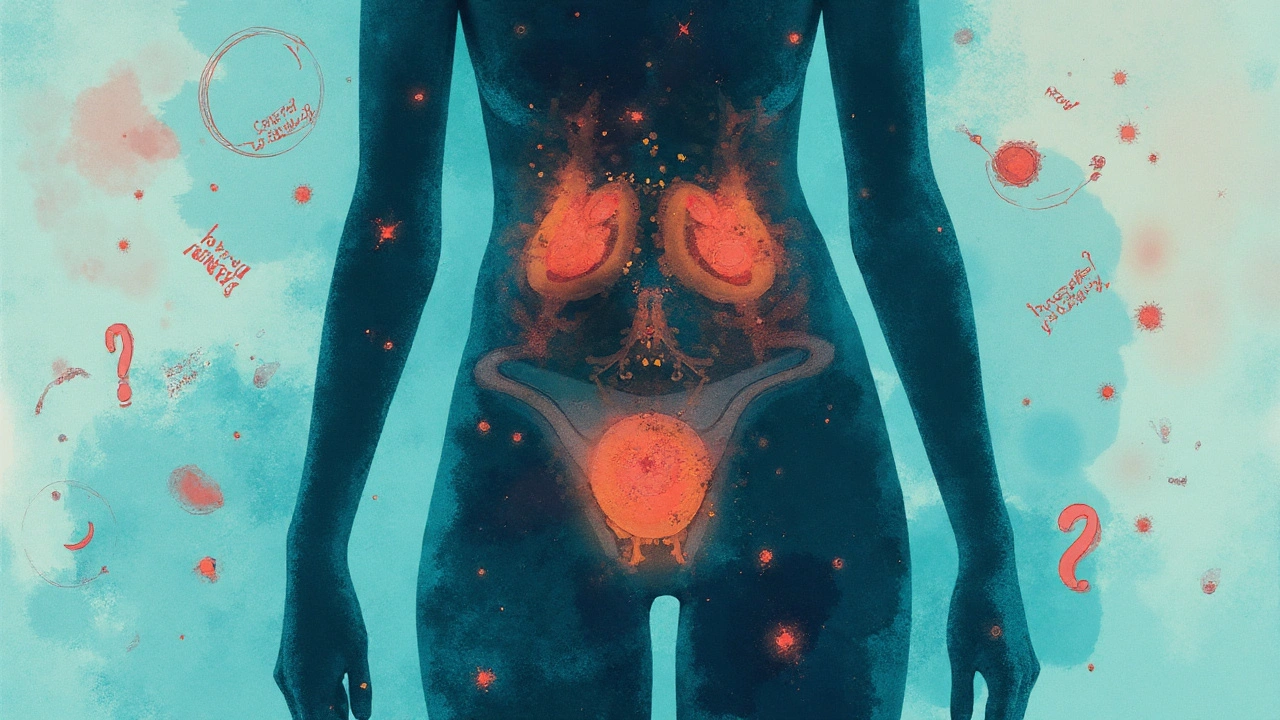
Tools: checklists, myth-busting, FAQs, and next steps
Symptoms checklist (keep a 3-week diary):
- Bloating or abdominal swelling most days
- Pelvic or tummy pain most days
- Feeling full quickly/loss of appetite
- Needing to pee more urgently or more often
- Unexplained weight loss, fatigue, or changes in bowel habit
If two or more of the first four are present most days for 3+ weeks, see your GP. Bring your diary.
Risk-mitigation checklist:
- Set a repeating reminder to test for chlamydia (annually if under 25; otherwise based on risk).
- Use condoms with new partners until both test negative.
- Complete antibiotics as prescribed, and ensure partners are treated.
- Re-test 3 months after a positive result to catch reinfection.
- Know your family history (ovarian, breast, bowel cancer). If strong, ask about genetic counselling.
What to ask your GP (copy-paste friendly):
- These symptoms have persisted most days for [X] weeks. Can we check for ovarian cancer with CA125 and pelvic ultrasound?
- I’ve had chlamydia/PID before. Does that change how we investigate my symptoms?
- Given my family history, do I meet criteria for genetic referral (BRCA testing)?
- If my CA125 is slightly raised, what’s the next step, and how soon?
Myth vs fact:
- Myth: A single chlamydia infection guarantees ovarian cancer. Fact: No. Most treated infections don’t lead to cancer. The potential risk increase is small.
- Myth: If I feel fine, I don’t need STI tests. Fact: Most chlamydia is silent. Routine testing is how you protect your future fertility.
- Myth: There’s a reliable screening test for ovarian cancer. Fact: There isn’t one for the general population. Testing is symptom-driven.
- Myth: Condoms don’t help. Fact: They reduce chlamydia transmission and reinfection risk when used consistently and correctly.
Mini-FAQ
- Can one past chlamydia infection cause ovarian cancer years later?
Unlikely on its own. The research points to chronic or repeated infections and PID as the bigger concern, and the increase in risk is small. - If I had chlamydia and was treated quickly, am I in the clear?
You’ve already done the most important thing. Re-test at 3 months and when changing partners, and keep up with safer sex. Stay symptom-aware like everyone should. - Does treatment reduce cancer risk?
We don’t have direct proof it lowers future ovarian cancer risk, but treatment prevents PID and other harm. That’s reason enough to treat promptly. - Should I ask for a CA125 “just in case” if I’m not symptomatic?
No. CA125 isn’t a good screening test; it can be abnormal for many benign reasons. If you have persistent symptoms, ask for CA125 plus an ultrasound. - How protective are condoms?
They significantly cut the risk of chlamydia transmission when used correctly. Combine with regular testing for best protection. - Can an IUD raise my chlamydia or cancer risk?
IUDs don’t raise ovarian cancer risk. There’s a small, short-term increase in infection risk at insertion if you have an existing STI, which is why some clinics test beforehand. - Is there a chlamydia vaccine?
Not yet. Trials are underway, but nothing licensed as of 2025. - Do birth control pills change ovarian cancer risk?
Yes-combined oral contraceptives lower ovarian cancer risk with longer use. They have pros and cons; discuss with your GP. - What about HPV?
HPV relates to cervical cancer, not ovarian cancer. Keep up with cervical screening and HPV vaccination if eligible.
Next steps / Troubleshooting
- If you’re under 25 and sexually active: Book a chlamydia test today and set a yearly reminder. Use condoms with new partners until you both test negative.
- If you’re 25+ with a new partner: Test now and again in 3 months. Keep condoms on the table until tests are clear.
- If you’ve had chlamydia more than once or a history of PID: Be strict about partner treatment and re-testing. If pelvic pain, bloating, or urinary symptoms persist most days for 3+ weeks, ask your GP for CA125 and pelvic ultrasound.
- If you’re trying to conceive: Test and treat any STIs now. If you’ve tried for 12 months (6 months if 35+), ask your GP for fertility assessment and tubal checks. Share any PID history.
- If you have a strong family history of ovarian/breast cancer: Discuss genetic counselling and risk-reduction options. Your inherited risk can outweigh small infection-related risks.
- If you feel dismissed: Bring a symptom diary, use firm language (“I’m worried about ovarian cancer”), and ask what would trigger an urgent referral. Consider a second opinion.
Why you can trust this
This guidance lines up with UK sources: UKHSA STI surveillance (2023-2024) on chlamydia patterns; NICE guidance on suspected cancer for when to use CA125 and ultrasound; and the UKCTOCS trial (The Lancet, 2021) explaining why we don’t screen everyone for ovarian cancer. Research linking chlamydia/PID to ovarian cancer risk includes antibody-based studies (Ness et al., 2008; Idahl et al., 2010) and meta-analyses up to 2019 showing modest associations. The story is still evolving, but the practical steps here won’t go out of date: test, treat, prevent, and don’t ignore symptoms.
If you’ve had chlamydia before, you haven’t “messed up” your future. You’ve learned something valuable about your body and your boundaries. Protect your present, and the future takes care of itself.
Write a comment
Items marked with * are required.
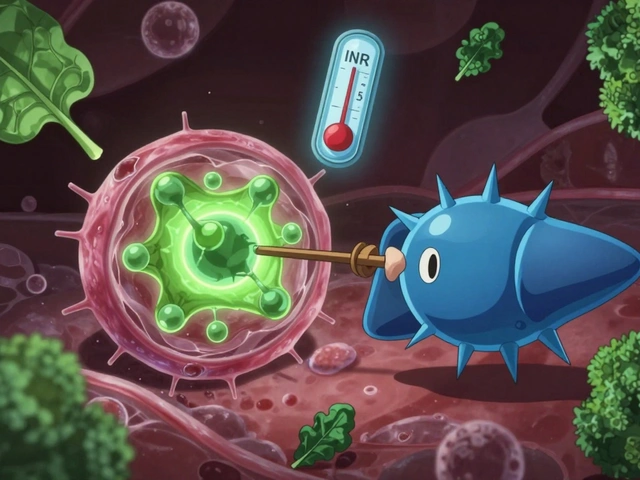

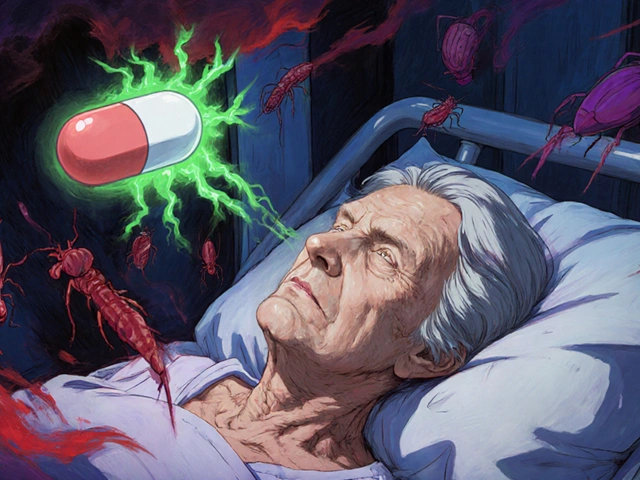
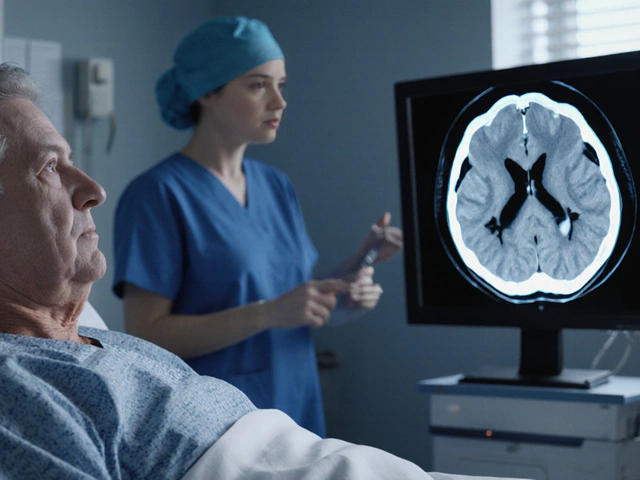


12 Comments
McKayla Carda August 30, 2025 AT 18:09
Just got tested yesterday-negative. Feels good to be proactive. If you're sexually active and under 25, just do it. No shame, no drama. Free, easy, and it saves your future self a ton of stress.
Also, condoms aren't optional if you're not in a tested, monogamous relationship. Period.
Christopher Ramsbottom-Isherwood September 1, 2025 AT 07:06
Let’s be real-this whole chlamydia-ovarian cancer link is a classic case of correlation being mistaken for causation. You could just as easily blame coffee, WiFi, or bad exes. The data is messy, the odds ratios are tiny, and we’ve got zero proof of mechanism. Stop scaring people with statistical ghosts.
Stacy Reed September 1, 2025 AT 20:19
It’s not just about chlamydia, is it? It’s about how we treat women’s bodies like they’re disposable until something goes wrong. We don’t screen for ovarian cancer because it’s ‘too expensive’ or ‘not cost-effective’-but we’ll spend millions on ads for weight loss tea. The system doesn’t care until you’re dying.
And then they tell you to ‘be aware of symptoms’ like that’s a cure. It’s not awareness we need-it’s accountability.
Robert Gallagher September 3, 2025 AT 17:22
I had chlamydia twice in my 20s. Treated both times. Never had PID. Still got tested every time I switched partners. I’m 32 now and fine. No cancer. No infertility. Just a guy who took the damn test and didn’t make excuses.
But here’s the thing-most people don’t. They wait until they’re in pain. Or until their partner gets diagnosed. Or until they’re trying to get pregnant and nothing’s working. Don’t be that person. Test early. Test often. Your future self will thank you. Even if you feel fine. Especially if you feel fine.
Howard Lee September 5, 2025 AT 00:24
Thank you for this clear, evidence-based breakdown. The distinction between relative and absolute risk is critical, and too often overlooked in public health messaging. A 30% relative increase from a 2% baseline is indeed negligible for most individuals. What matters most is consistent testing, prompt treatment, and symptom awareness-all of which are actionable and low-cost. This is exactly the kind of nuanced communication we need more of.
Nicole Carpentier September 6, 2025 AT 09:51
Just got back from my first NHS clinic visit in the UK last week-free test, no judgment, nurse gave me a sticker. Felt like a superhero.
My mom had ovarian cancer. I’m 28. I test every year. I use condoms. I don’t douche. I keep a symptom diary. I’m not scared-I’m prepared.
And if you’re reading this and you’re not doing any of that? Start today. Not tomorrow. Today.
Love you. You got this. 💪
Hadrian D'Souza September 7, 2025 AT 12:08
Oh wow. Another ‘here’s how to not die from a 0.6% increased risk’ guide. Let me grab my tin foil hat and my hand sanitizer while I’m at it.
You know what’s really dangerous? The medical-industrial complex turning every minor statistical blip into a life-or-death emergency so you’ll keep showing up for tests, pills, and anxiety-driven checkups. We’re not talking about a plague here-we’re talking about a whisper in a hurricane.
And yet, here we are. Panic-optimized content for the attention economy. Bravo.
Brandon Benzi September 8, 2025 AT 20:16
This is why America’s healthcare system is broken. You’re telling people to go to the NHS for free tests while we’re stuck paying $300 for a urine dipstick. And now you want us to worry about ovarian cancer because of a STI we can’t even afford to test for? Get real.
Fix the system first. Then talk about risk percentages.
Abhay Chitnis September 10, 2025 AT 07:47
Bro I tested positive in India last year. Free test at government clinic. Got doxycycline. Told my partner. Re-tested in 3 months. Negative. No big deal.
Why is everyone making this so dramatic? It's just bacteria. Treat it. Move on.
Also, condoms are cheap. Use them. 😊
Robert Spiece September 10, 2025 AT 11:13
Let me ask you something: if chlamydia causes ovarian cancer, why isn’t every woman who’s ever had it dead by 40? Why aren’t we seeing epidemic-level rates? Why are the odds ratios barely above 1.0? Because the link is noise, not signal.
And yet, here we are-turning a biological curiosity into a public health panic. We’ve turned medicine into moral theater. You test? You’re responsible. You don’t? You’re reckless.
It’s not about health. It’s about control. And I’m tired of it.
Vivian Quinones September 11, 2025 AT 03:00
I had chlamydia. I got better. I don’t think about it. I don’t want to think about cancer. I just want to live. Why does everything have to be a warning? Can’t we just be healthy without being scared all the time?
Eric Pelletier September 13, 2025 AT 00:06
From a clinical microbiology standpoint, the proposed biological plausibility hinges on chronic inflammatory cytokine upregulation (IL-6, TNF-α) in the fallopian tube epithelium, potentially inducing DNA damage and epithelial-mesenchymal transition-key pathways in serous carcinoma initiation. The antibody-based seroepidemiology studies (Ness 2008, Idahl 2010) are limited by recall bias and lack of longitudinal data. Mendelian randomization studies remain inconclusive due to weak instrument bias. That said, the public health imperative remains: reducing chlamydia transmission via routine screening and partner notification is a low-risk, high-reward intervention, regardless of the cancer link. Prevention of PID and infertility alone justifies the protocol. CA125 remains a poor screening tool, but as a diagnostic adjunct in symptomatic patients, it’s still clinically useful under NICE guidelines. Bottom line: test, treat, re-test. The rest is academic.